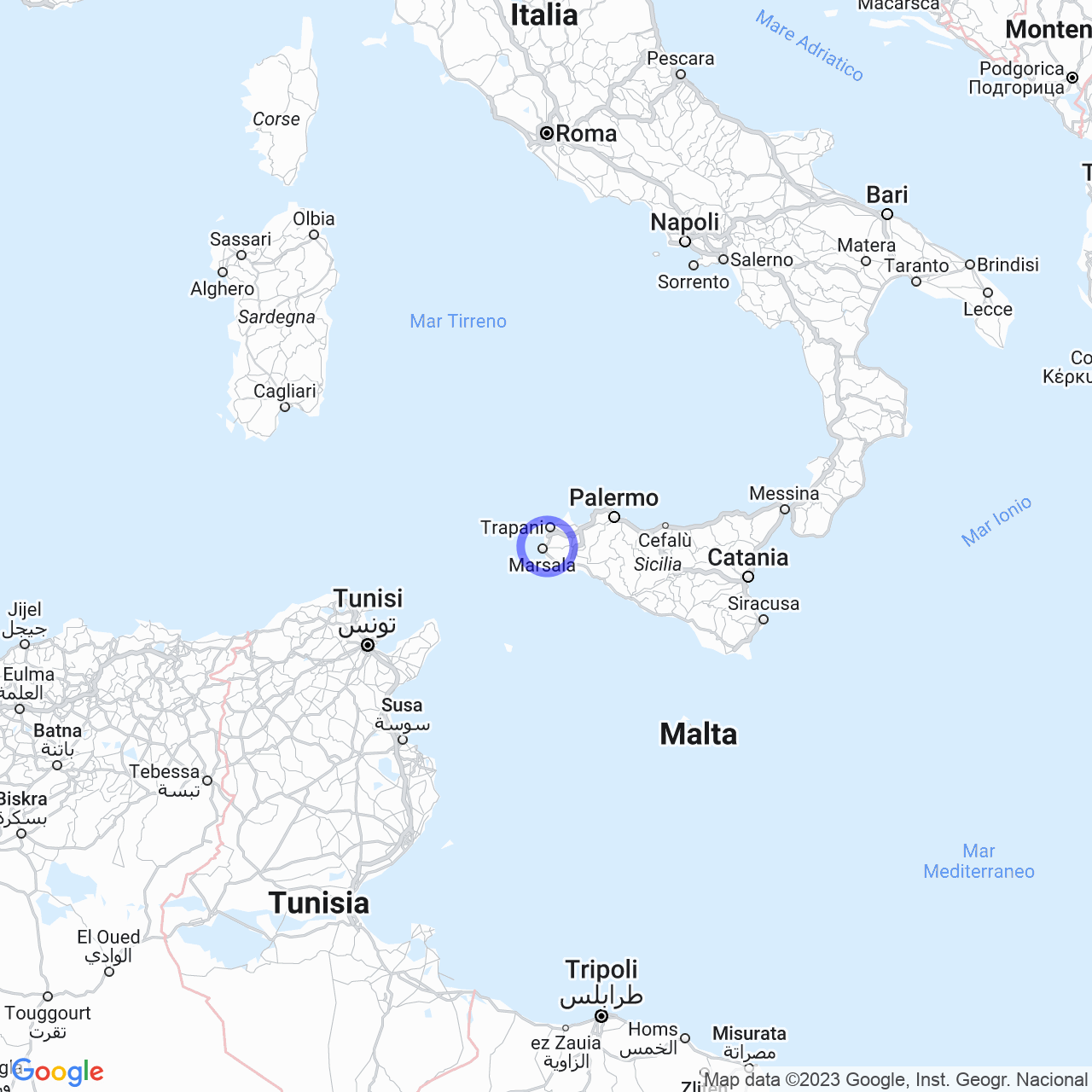Marsala
Marsala: the city between two seas
Hello friends, today I want to talk to you about Marsala, a wonderful city located in Sicily. With its 79,709 inhabitants, Marsala is the fifth largest municipality in Sicily and represents an important crossroads between the Tyrrhenian Sea and the Sea of Sicily.
Geography
Marsala is located on Cape Boeo and is surrounded by both seas. The city has two large opposing maritime coastlines. The north coast, which includes the beautiful Stagnone Islands Lagoon up to Birgi, while the south coastline, with a sandy formation, is crossed by the Sossio river. The hinterland extends to the 188 Centro Occidentale Sicula state road.

Climate
Marsala has a mild climate with temperatures reaching 40 degrees in summer and rainy winters ranging from 7 to 17 degrees.
The history of Marsala
From foundation to Roman domination
The history of Marsala dates back to Roman times, when Marcus Tullius Cicero was the questor of the city from 76 to 75 BC. During his mandate, he distinguished himself for his honesty and skill at work, so much so that he was called back two years later to preside over the case against the propretor Gaius Licinius Verres, accused of stealing from citizens and the State. The case was won by Marcus Tullius Cicero. Today, at the Baglio Anselmi Archaeological Museum, a half-bust of Marcus Tullius Cicero is on display and a street in the city is named after him.
The naval battle of 241 BC
In 241 BC, Marsala was the scene of a naval battle of the First Punic War, fought in the waters around the city. Today, at the Baglio Anselmi Archaeological Museum, it is possible to admire the Punic ship of Marsala, a historical relic that bears witness to the greatness of Marsala in the past.
The Phoenician colony of Mozia
Marsala is also known for its ancient Phoenician colony of Mozia, located on an island off the city. Unfortunately, this colony was destroyed by the tyrant of Syracuse, Dionysius I of Syracuse in 397 BC.
The production of Marsala
But the fame of Marsala does not stop at its ancient history. The city is known worldwide for the production of its namesake Marsala wine. In 1987, Marsala was declared "City of Wine" and the production of Marsala wine falls under the IGP.
Marsala is a fortified wine, mainly produced with white grapes (Grillo, Catarratto, Inzolia, and Damaschino) enriched with mistella (concentrated must and alcohol). The wine is aged in oak barrels for 1 to 4 years, depending on the type of Marsala produced.
In addition to Marsala, Marsala is also famous for the production of other fine wines, such as Moscato di Pantelleria, Nero d'Avola, and Grillo.
The beauties of Marsala
Stagnone di Marsala Islands
Marsala is a city rich in natural and landscape beauties. One of the major attractions is the archipelago of Stagnone di Marsala Islands, located within the orientated natural reserve. The archipelago includes four main islands: Mozia, Santa Maria, Isola Lunga, and Isola Schola.
The beaches
The beaches of Marsala are famous for their beauty and cleanliness. The sandy coastline is characterized by equipped and free beaches. I recommend visiting Lido Signorino Beach to admire the view of the Stagnone Islands or San Teodoro Beach to practice kitesurfing.
The historic center
The historic center of Marsala is an oasis of art and culture. The churches such as the Mother Church and the Cathedral are suggestive and preserve important works of art. For a romantic walk, I recommend visiting the district of Byzantine Houses, which owes its name to the characteristic houses with a dome roof.
Conclusion
Marsala is an amazing city that combines history, culture, art, and nature at the same time. With its natural beauties, dreamy beaches, old wine-making traditions that made Marsala famous in the world, the city is definitely a destination not to be missed if you have the opportunity to visit Sicily.
